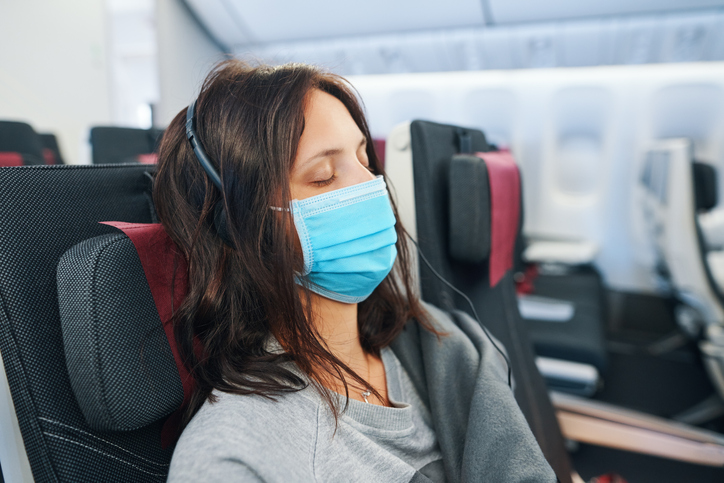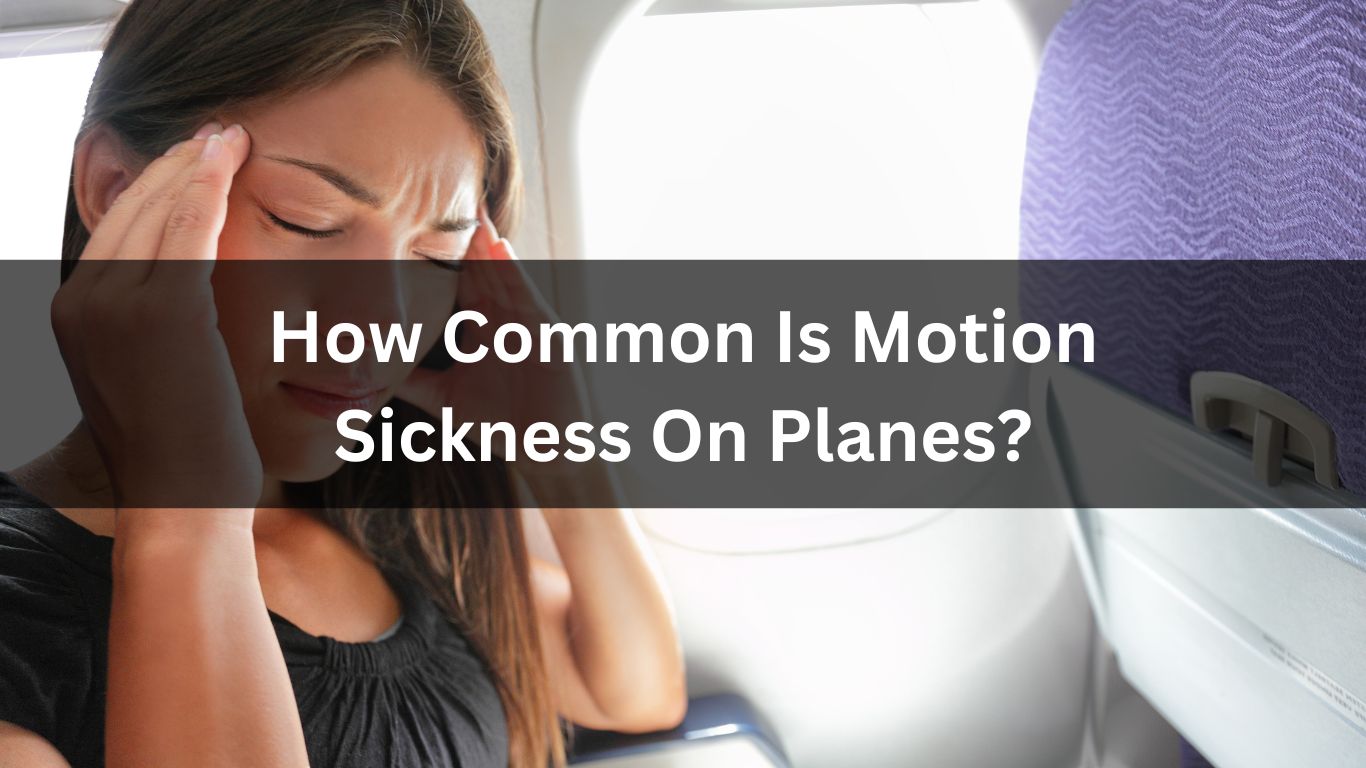A lot of people experience motion sickness on planes while traveling. However, if you travel often, then you will used to it.
Motion sickness on planes is a common occurrence, affecting a significant number of passengers. Despite taking measures such as medication or sitting in specific areas of the aircraft, many individuals still experience discomfort when flying.
In this article, I will discuss deeply how common is motion sickness on planes in details. So, let’s get started–

Credit: wwwnc.cdc.gov
How Common Is Motion Sickness On Planes?
Motion sickness is a common occurrence for many people when traveling on planes. Understanding its prevalence among passengers is essential in addressing this issue. Demographics play a significant role in the incidence rates of motion sickness.
Factors such as age, gender, and previous experience can influence the likelihood of experiencing symptoms. For example, children and young adults are more susceptible to motion sickness compared to older individuals. Additionally, women tend to be more prone to motion sickness than men.
Moreover, the number of reported cases has varied over the years. While some studies have indicated a decrease in reported incidents, others suggest a constant or even increasing trend. It is important for airlines and passengers to be aware of the high prevalence of motion sickness and take appropriate measures to alleviate symptoms during air travel.
Signs And Causes Of Motion Sickness On Planes
Motion sickness is a common condition experienced by many individuals when traveling on planes. The signs and causes of motion sickness vary from person to person. Some common symptoms indicating motion sickness include nausea, dizziness, sweating, and vomiting. These physiological responses can be attributed to a disruption in the body’s equilibrium caused by the constant movement and changes in acceleration during flights.
In addition to physiological factors, psychological factors can also contribute to the discomfort of motion sickness. Anxiety and stress associated with flying can heighten the likelihood of experiencing motion sickness. The fear of flying or anticipation of discomfort can induce a psychological response that exacerbates the symptoms.
| Physiological Explanations | Psychological Factors |
|---|---|
| Movement and acceleration during flights disrupt the body’s equilibrium. | Anxiety and stress associated with flying can heighten symptoms. |
| Changes in pressure and air quality can also contribute to discomfort. | Fear of flying or anticipation of discomfort exacerbates symptoms. |
Types And Triggers Of Motion Sickness On Planes
The severity and onset of symptoms can vary greatly among individuals. Factors such as age, susceptibility, and the type of motion experienced can influence the likelihood of experiencing motion sickness during a flight.
Specific triggers during a flight can include turbulence, rapid changes in altitude or direction, and the visual disorientation caused by looking out of a window while in motion. These triggers can disrupt the body’s sensory system and lead to symptoms such as nausea, dizziness, and vomiting.
Comparing motion sickness in other travel modes, such as cars or boats, it is important to note that the enclosed environment of an airplane can exacerbate the symptoms. The lack of windows, limited fresh air, and artificial lighting can contribute to a higher incidence of motion sickness on planes.
People experiences of motion sickness can vary greatly, with some people being more prone to symptoms than others. It is important for those who frequently experience motion sickness to be aware of their triggers and take appropriate measures to minimize their discomfort during a flight.
Preventative Remedies Of Motion Sickness
Let’s see some of the primary preventative remedies of motion sickness on planes here–
- Choose a seat over the wings to minimize motion.
- Avoid consuming heavy meals and alcohol prior to flying.
- Stay hydrated by drinking water throughout the flight.
- Use acupressure wristbands to apply pressure on specific points to alleviate symptoms.
- Consider taking over-the-counter medications, such as antihistamines.
- Focus on a fixed point and avoid looking down or around too much.
- Keep the air vents open for fresh air circulation.
- Close your eyes and take deep breaths if you start feeling nauseous.
- Listen to calming music or use noise-canceling headphones.
- Avoid reading or using electronic devices that require focusing on a screen.
- Eat light, bland meals and avoid spicy or greasy foods after landing.
- Rest and sleep to allow your body to recover from the sensory overload.
- Take ginger supplements or consume ginger tea to soothe the stomach.
Motion Sickness And Air Travel Trends
Motion sickness is a common issue experienced by many passengers during air travel. According to statistical data, a significant number of passengers are affected by motion sickness on planes. The introduction of newer aircraft technology has had a positive impact in reducing motion sickness.
These advanced aircraft are designed to minimize turbulence and provide a smoother travel experience. Additionally, the evolution of in-flight entertainment and comfort options has helped distract passengers and alleviate symptoms of motion sickness. The availability of various entertainment options and comfortable seating arrangements can make the journey more enjoyable and lessen the impact of motion sickness.
Coping Strategies For Frequent Flyers
- Anti-motion sickness medication
- Pressure-reducing earplugs or earphones
- A neck pillow or support cushion
- Motion sickness wristbands or pressure point bands
- Essential oils or soothing scents
- Water bottle to stay hydrated
- Healthy snacks to avoid an empty stomach
- Distracting entertainment such as books, movies, or music
- Chewing gum or candies to alleviate ear pressure
If motion sickness on planes becomes a chronic issue and significantly affects your travel experience, it may be advisable to consult with a medical professional. Additionally, if the symptoms worsen or persist for an extended period, seeking medical advice is essential.
Conclusion
Motion sickness on planes is a common issue that affects a significant number of travelers. Understanding the causes and symptoms can help individuals better prepare and manage the condition. Whether it is through medications, acupressure techniques, or other preventive measures, there are ways to alleviate the discomfort and enjoy a smoother flight experience.
FAQs On How Common Is Motion Sickness On Planes
How Likely Am I To Get Sick On A Plane?
The likelihood of getting sick on a plane is relatively low. Airplanes have air filtration systems to reduce the spread of germs. However, it’s still essential to take precautions, such as washing your hands regularly and avoiding touching your face.
How Do You Prevent Motion Sickness When Flying?
To prevent motion sickness when flying, try these tips: 1. Choose seats over the wings to minimize movement sensation. 2. Focus on the horizon or a fixed point to stabilize your senses. 3. Avoid excessive alcohol or heavy meals before flying. 4. Use acupressure wristbands or take medication recommended by your doctor. 5. Stay hydrated and maintain good ventilation during the flight.
Is It Normal To Throw Up On A Plane?
Yes, it is normal to feel nauseous or vomit on a plane due to motion sickness. The sensation of turbulence can upset the balance in your inner ear and cause discomfort. To minimize this, try sitting near the wings and focus on a stable point.

Nazmul Gazi is a dedicated final-year student at Cumilla Medical College with a passion for promoting health and wellness. Drawing from his medical studies, Nazmul writes insightful health tips and guides, helping readers make informed decisions about their well-being.

